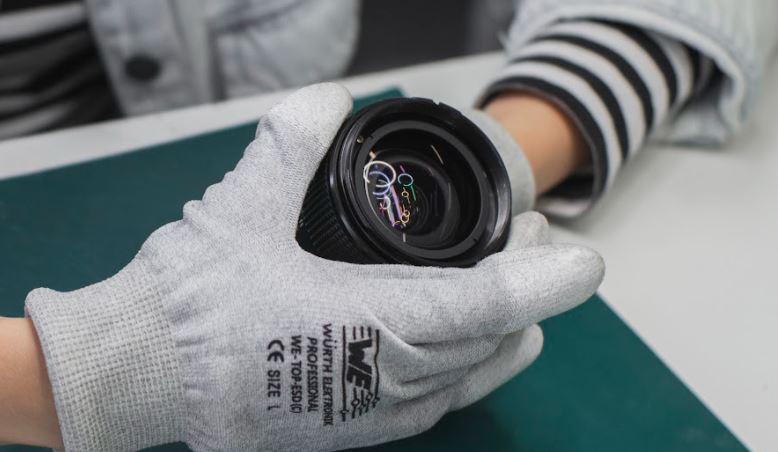Lens rehousing is a long and skill-requiring project with a surprising number of different phases. In this article, we tell about Whitepoint Optics’ rehousing process: what kind of steps rehousing requires and what kind of challenges can arise during the project?
What lens rehousing is?
Lens rehousing means that an old still camera lens is given a new life and converted to fit the modern standards of cinematography. After conversion, the lenses can be used in cinematography and are compatible with modern cine accessories. In a typical case, the converted lenses are originally still camera optics.
1. Before rehousing process starts: Inspection
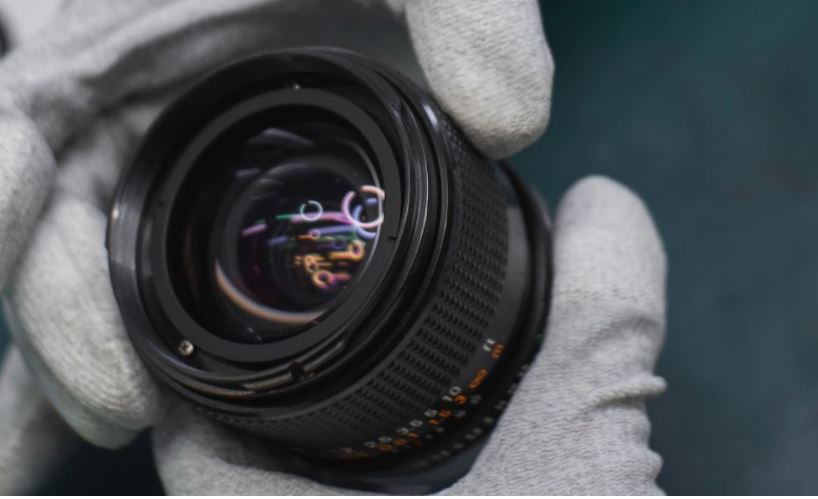
Before rehousing process begins, we make sure the lens is suitable for rehousing.
All the lenses are first externally inspected. This is to make sure that our conversion work can be done to the lenses. The most common issue that can prevent rehousing process is lens fungus, which can permanently damage lens coating. If the coating is damaged by fungus or harsh cleaning methods, it might be necessary to do re-coating to fix the damage and this can lead to a more modern look. To preserve the desired vintage aesthetics we don’t recommend re-coating services and usually, the best option is to source a new lens with intact coating. Often we see lenses before the client does, as they are harvested around the world, and sent to us for rehousing. If we see any irreparable lenses, we notify the customer and work out what we can do.
Sometimes lenses are so damaged or mishandled that it makes them impossible to use or rehouse. Luckily, this is very rare. During the conversion process, we will be in contact with our customers, with estimated delivery-time.
2. A dedicated technician takes care of the conversion process
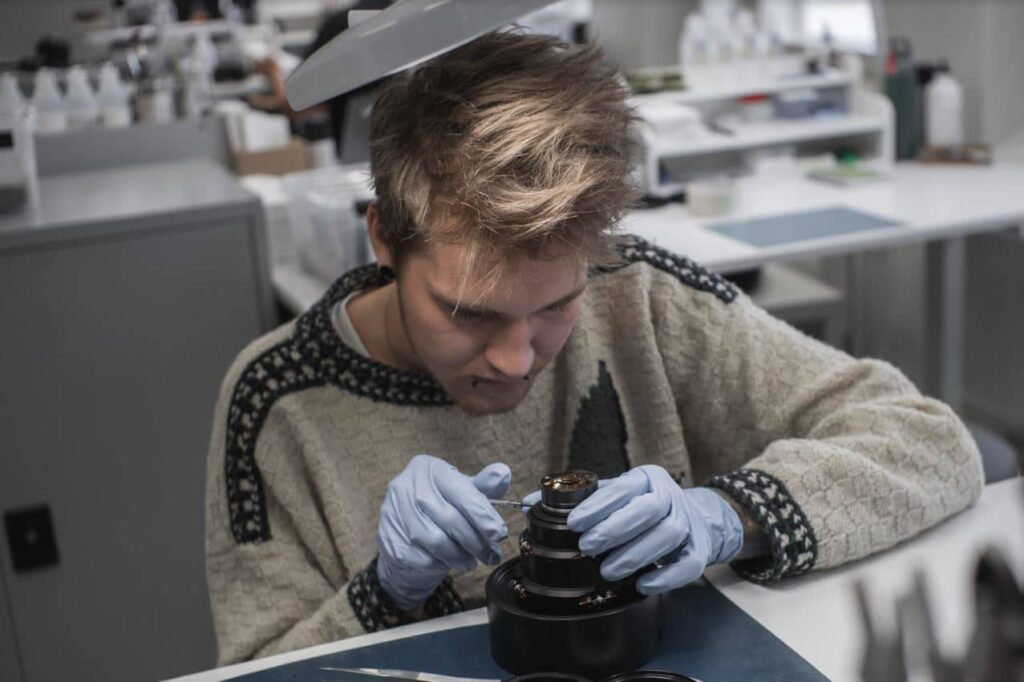
Each rehoused lens has a dedicated technician.
After the lens has passed the first check, a dedicated technician is named to work on the lens or lens set. Lens rehousing is artisan work, and working through a set of lenses, each technician gets to know their unique features. Getting to know these features means it is easier to work through possible challenges. During the process, they do keep in touch with the customer and send regular updates.
Our regular customers are familiar with our technicians. The goal is that the customer can have the same technician to work for possible future lens projects as well. This way the technician already knows what is important to the customer. Once we have rehoused a set of lenses to a customer, they will most likely return with new projects.
3. Dismantling the lens and designing new parts
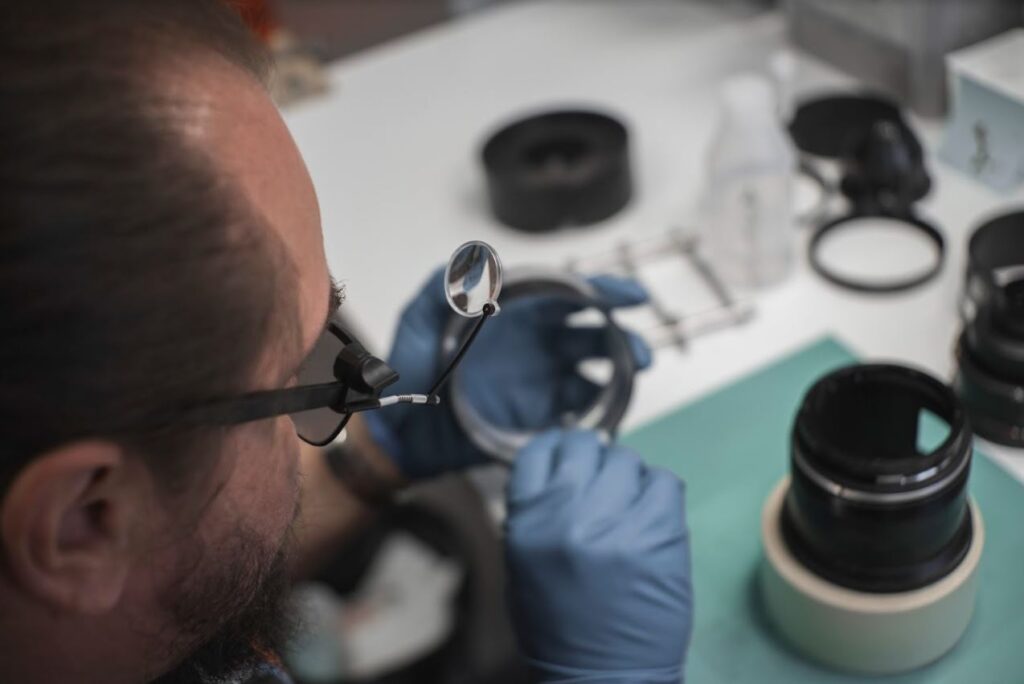
Rehousing process starts with dismantling the old lens construction.
In the beginning of the conversion process, the lens is dismantled. For our standard catalogue products, all needed design work has already been done. However, with some lens series such as Zeiss Jena for example there are so many different kinds of source lenses and models out there that custom design is needed. Together with our lens designers, new parts can be designed to meet the unique part requirements. Every now and then we also accept more special conversion projects and designing dedicated parts to them keeps our designers busy.
Often lens technicians and lens designers sit down together to figure out the best possible technical solution for each lens. All unique parts are then custom-made to fit our standards. We have a trusted partner network working with us, and they are as dedicated as we are to manufacturing the highest quality mechanical parts for our technicians.
4. New robust construction and personalized engravings
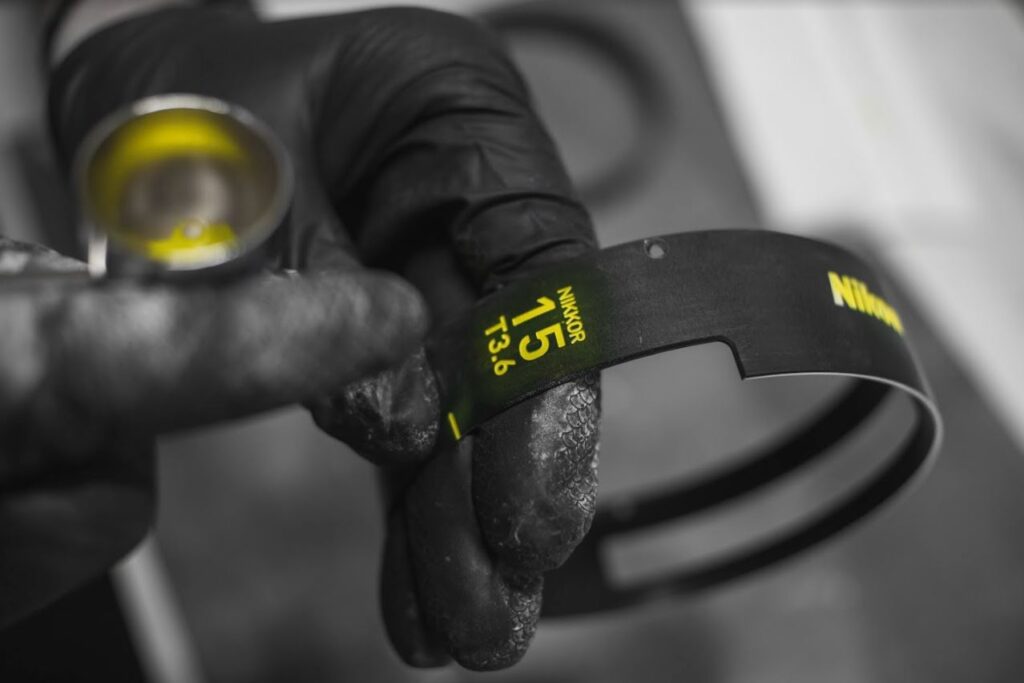
Engravings are added to the lens construction.
Robust aerospace-grade aluminium construction is built to protect the valuable lens. We can add custom design and personalized engravings to finalize the look. These include a custom logo design, a range of colors to choose from and a stylish design to fit the client’s aesthetics. This is a nice final touch to have in a valuable and trusted set of lenses.
5. Testing and fine-tuning the rehoused lens
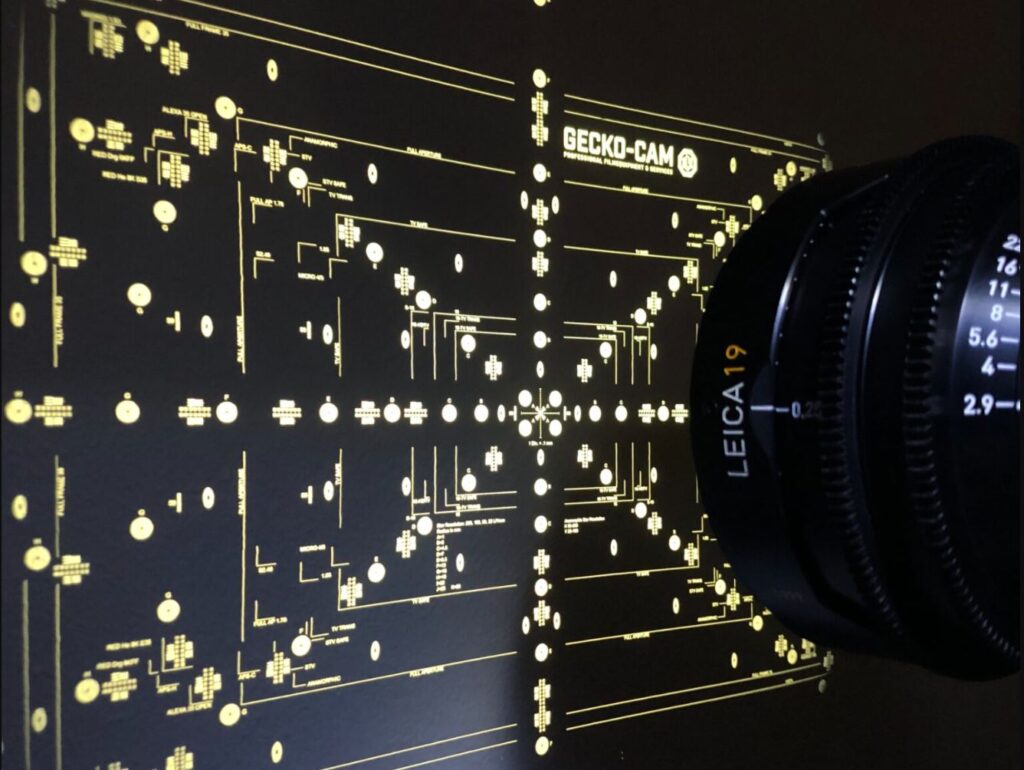
Final steps of lens rehousing: we inspect that the lens works as it should and meets industry standards.
Rehousing should enhance lens focus and convenience in use, and not take away bokeh or other unique features of the original lens. That is why testing the lens after rehousing is important. We carefully inspect that the lens works as it should and meets industry standards. Naturally, there are limitations when converting vintage lenses and also the inherent limitations of the source optics will follow all the way to the end product. We can for example most often improve the close focus abilities of a lens, but if the source lens doesn’t cover full frame, don’t expect the conversion process to fix that.
What you can expect from our rehousing process is, that your source lens will be built into totally new mechanical housing to meet modern cinema standards. You can expect a 280-300 degree focus throw with matching scales to fit modern camera motors. The technicians want to deliver the best possible result with each product, and that is why fine-tuning can take some time. A finished rehoused lens is durable and easy to use.
Interested? We rehouse vintage lenses to be used with modern equipment and still lenses to serve in filmmaking. We serve cinematographers, film equipment rental houses and filmmakers around the world.
